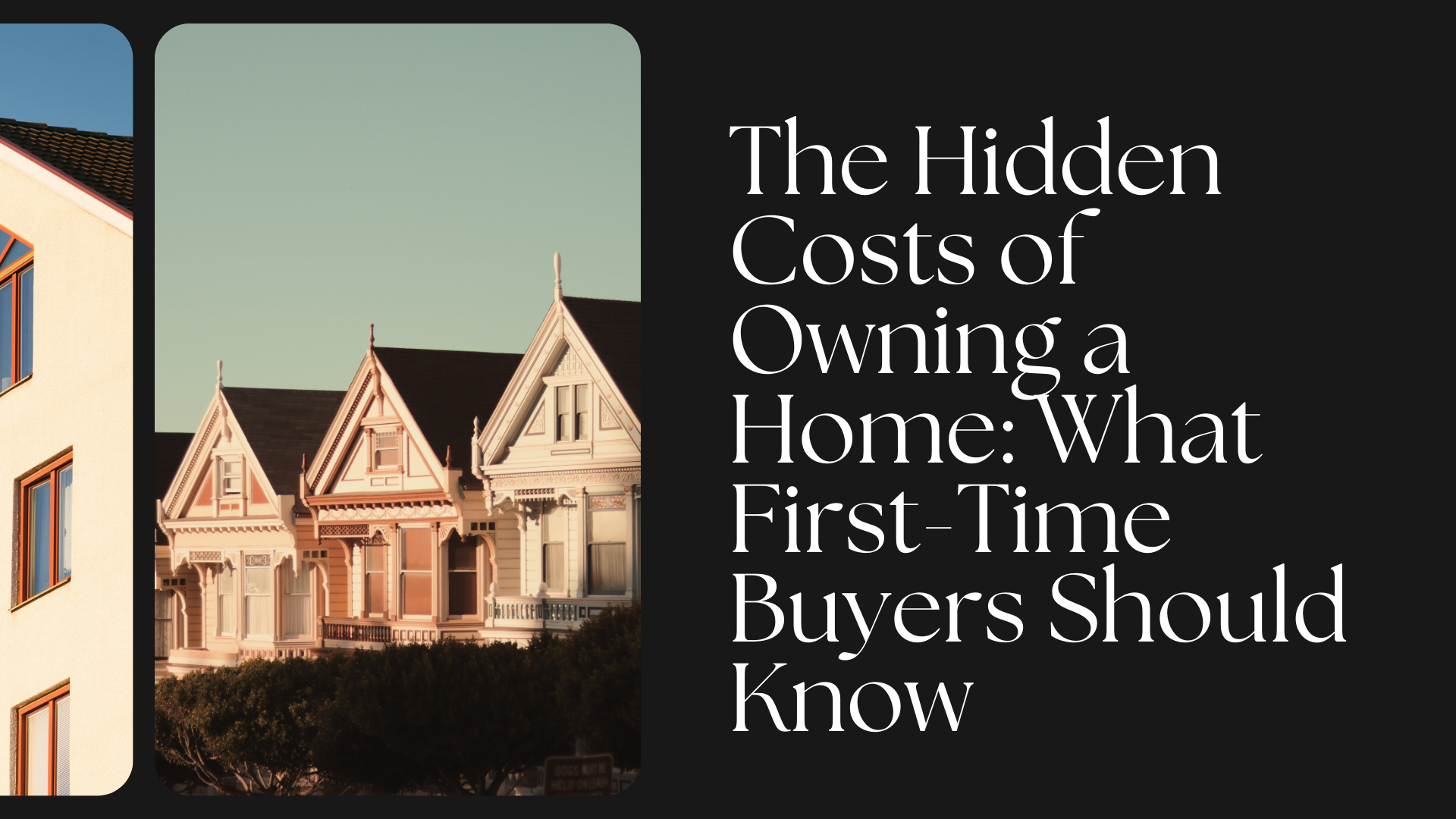Introduction: There’s More to Homeownership Than a Mortgage
Buying a home is often seen as the ultimate financial milestone—a sign of stability, success, and independence. But for first-time buyers, the excitement can quickly be tempered by unexpected expenses. While mortgage payments are typically top of mind, there are many hidden costs of owning a home that can catch buyers off guard. If you’re planning to purchase your first property, this guide will help you understand the full financial picture and avoid surprises.
1. Property Taxes: A Recurring Expense That Varies by Location
What it is: A tax levied by your local government, based on your home’s assessed value.
Why it matters: Property taxes are often rolled into your monthly mortgage payment via escrow, but the amount can increase yearly. In some areas, annual property taxes can run into thousands of dollars.
✅ Pro Tip: Research tax rates in your area before purchasing, and ask for the latest assessment from the seller or real estate agent.
2. Homeowners Insurance: Mandatory but Often Underestimated
What it is: Insurance coverage that protects your home and possessions from damage, theft, or liability.
Why it matters: Most mortgage lenders require homeowners insurance, and costs can vary widely based on location, coverage level, and home value.
✅ Pro Tip: Shop around and compare quotes. Also, be aware of exclusions—standard policies don’t always cover floods or earthquakes.
3. Private Mortgage Insurance (PMI): A Common Surprise for Low Down Payments
What it is: Insurance that protects the lender if you default on your loan—usually required if your down payment is less than 20%.
Why it matters: PMI can add $100–$300 or more to your monthly payments. It doesn’t benefit you, but it’s often unavoidable without a large down payment.
✅ Pro Tip: Once your home equity reaches 20%, you can usually request to remove PMI.
4. Maintenance and Repairs: A Cost That Never Ends
What it is: Routine upkeep (e.g., lawn care, plumbing, HVAC maintenance) and emergency repairs.
Why it matters: Homeownership means you’re on the hook for everything that breaks. Even newer homes require regular care.
-
Annual average maintenance cost: 1%–3% of home value
-
Common expenses: roof repairs, pest control, water heater replacement
✅ Pro Tip: Build an emergency fund just for home-related issues—unexpected repairs can cost thousands.
5. Utility Bills: Often Higher Than You’d Expect
What it is: Gas, water, electric, trash, and sometimes sewer or internet bills.
Why it matters: Utilities in a home, especially a larger one, are typically much higher than in an apartment.
✅ Pro Tip: Ask the seller or real estate agent for an estimate of recent utility bills to plan your monthly budget.
6. HOA Fees: Hidden in Plain Sight
What it is: Fees charged by Homeowners Associations to cover community amenities and upkeep.
Why it matters: Not all homes have HOAs, but those that do can charge anywhere from $50 to $500+ monthly.
✅ Pro Tip: Read the HOA bylaws. These fees may also include strict rules that impact how you use your property.
7. Appliance Replacement and Upgrades
What it is: Costs associated with replacing old appliances or making upgrades.
Why it matters: Even if appliances are working during the sale, they may be outdated or inefficient.
✅ Pro Tip: Budget for gradual replacements—start with energy-hungry appliances like refrigerators and HVAC units.
8. Lawn Care and Landscaping
What it is: Ongoing expenses to maintain your yard, garden, or exterior appearance.
Why it matters: If you’re used to apartment living, you may underestimate the time or cost required to maintain your lawn, especially in regions with seasonal weather.
✅ Pro Tip: Decide early whether to DIY or hire professionals and budget accordingly.
9. Pest Control and Preventative Services
What it is: Regular treatments to keep termites, rodents, and other pests at bay.
Why it matters: Some pest problems are not covered by insurance and can cost thousands if left untreated.
✅ Pro Tip: Schedule annual inspections and set aside a few hundred dollars a year for basic pest control.
10. Home Furnishing and Décor
What it is: The cost of making your new house feel like home.
Why it matters: Many new homeowners spend thousands furnishing rooms that were previously unused or nonexistent in apartment living—like a second bedroom, dining area, or outdoor patio.
✅ Pro Tip: Furnish slowly. Focus on essentials and build up as your budget allows.
Conclusion: Go Beyond the Mortgage to Plan Wisely
Owning a home is rewarding, but it comes with a variety of hidden costs that first-time buyers often overlook. By preparing in advance for these extra expenses—from insurance and taxes to ongoing maintenance—you’ll avoid financial stress and ensure your home remains a place of comfort, not a source of unexpected debt.
Take the time to build a realistic homeownership budget, and don’t be afraid to consult professionals when needed. Financial preparation is the key to enjoying your first home with confidence.
